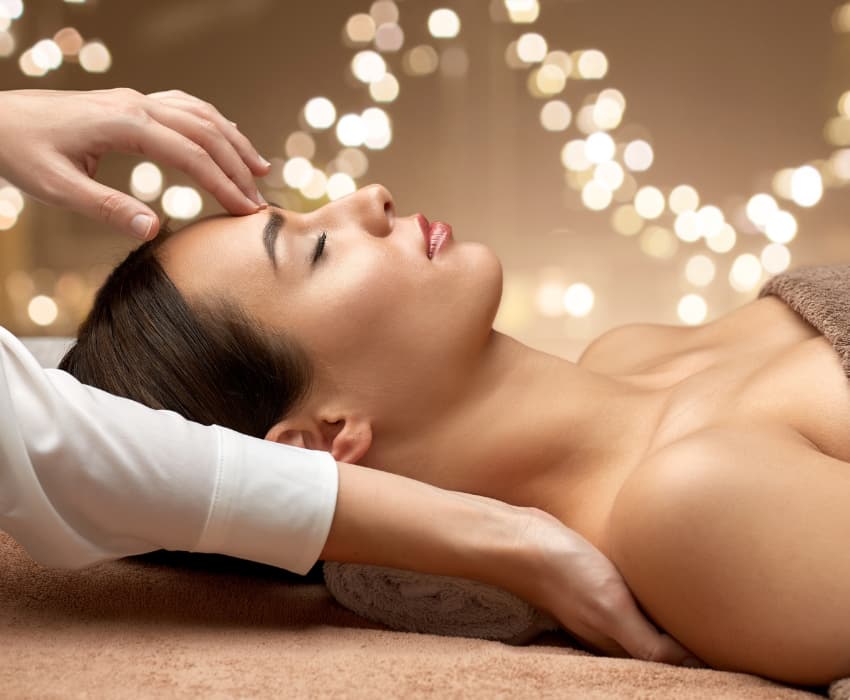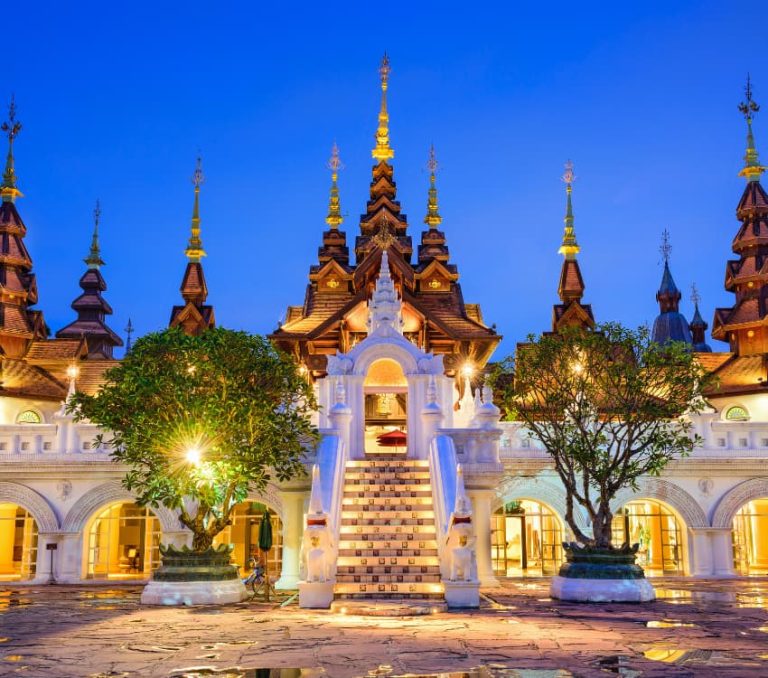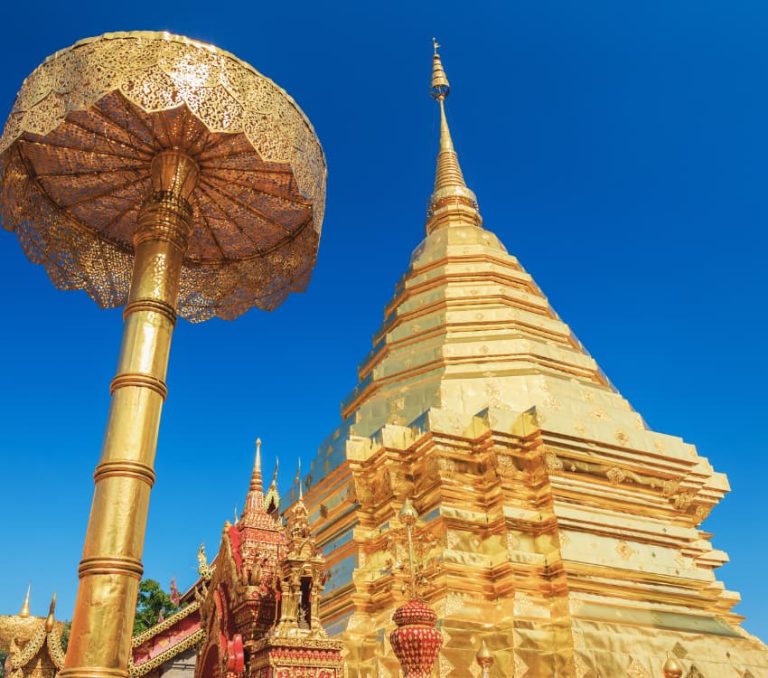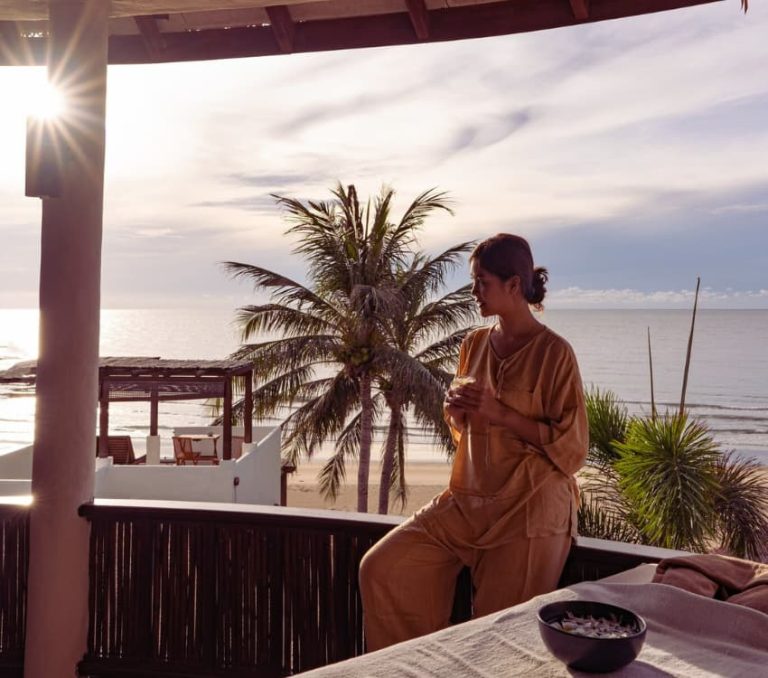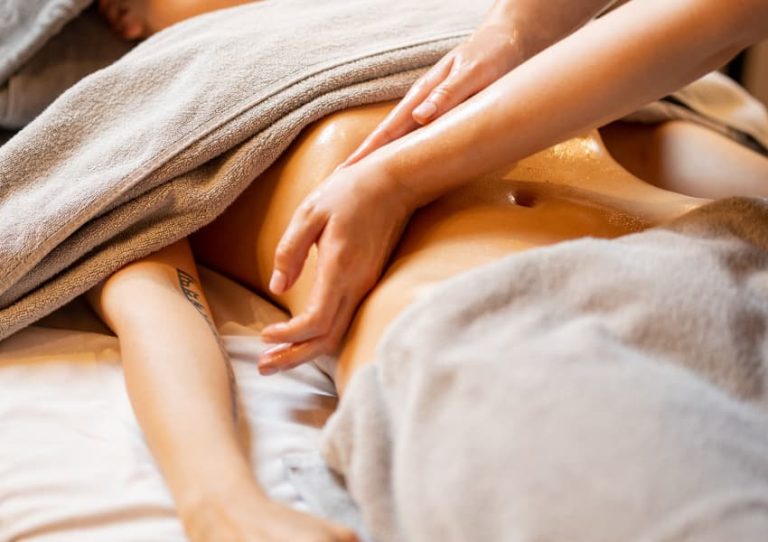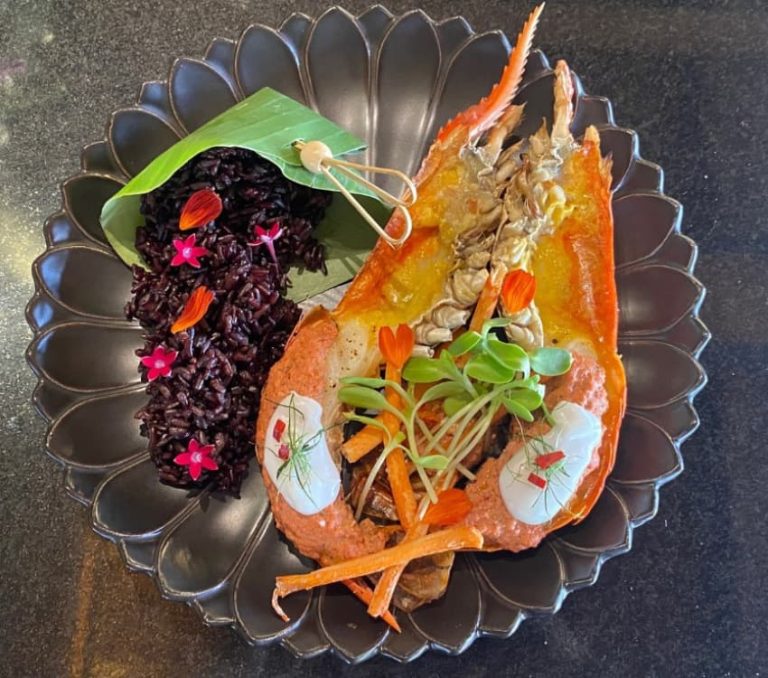Ayurveda, one of the world’s oldest holistic healing systems, originated in India over 3,000 years ago. Predicated on the belief that health and wellness depend on a delicate balance between the mind, body, and spirit, Ayurveda proposes a comprehensive approach to health, emphasising prevention through lifestyle practices and natural therapies. Central to Ayurvedic medicine is the concept of doshas, or life forces, that govern the physiological and psychological aspects of one’s being. Achieving and maintaining balance among these doshas is essential for optimal health and well-being.
Among the myriad practices under the Ayurvedic umbrella, Shirobhyanga, or traditional head massage, stands out as a vital technique for promoting mental and physical health. Shirobhyanga targets the head, neck, and shoulders, repositories of stress and tension. This practice offers immediate physical relief and contributes to long-term wellness by stimulating various pressure points that can rebalance energy flow throughout the body.
The importance of head massage in Ayurveda cannot be overstated. It is not merely a remedy for stress or a means to improve scalp and hair health; it is a holistic treatment that supports the body’s natural healing processes. Shirobhyanga enhances blood circulation, aids in removing toxins, and promotes relaxation by applying warm herbal oils and specific massage techniques. This, in turn, can lead to improved sleep, reduced anxiety, and a heightened sense of clarity and well-being.
Background of Shirobhyanga
Shirobhyanga, a deeply rooted practice in the rich tapestry of Ayurvedic medicine, traces its origins back to ancient India. As a cornerstone of Ayurvedic healing, it has been a revered practice for millennia, as documented in the earliest texts of Ayurveda, such as the Charaka Samhita and Sushruta Samhita. These foundational texts, which serve as the bedrock of Ayurvedic knowledge, detail head massage’s methodologies, benefits, and spiritual significance within the broader spectrum of holistic health practices.
In ancient Indian culture, head massages were more than just therapeutic techniques; they were integral rituals that embodied the essence of nurturing and healing. They were often administered as part of a daily routine to promote longevity, cognitive function, and spiritual awakening. The head, considered the seat of one’s identity and consciousness, was given paramount importance, and specific oils and herbs were selected based on an individual’s dosha (bioenergetic constitution) to ensure balance and health.
Over the centuries, Shirobhyanga evolved, incorporating diverse massage techniques and herbal preparations, but its core principles remained unchanged. It transitioned from a sacred familial ritual into a formalised therapeutic practice offered by skilled practitioners as part of a comprehensive Ayurvedic treatment plan. This evolution reflects Shirobhyanga’s adaptability and enduring relevance, demonstrating its ability to meet changing health needs and stressors for successive generations.
The cultural significance of Shirobhyanga has also been reflected in its role within the broader spectrum of Indian life. It has been a practice embraced for its physical benefits and profound impact on mental and emotional well-being. In a society where communal bonds and personal harmony are highly valued, Shirobhyanga has acted as a conduit for emotional exchange and connection, strengthening the ties between practitioner and recipient, parent and child, or among friends and family members.
Today, Shirobhyanga stands as a testament to the ancient wisdom of Ayurveda, continuing to offer deep relaxation, healing, and rejuvenation to those who embrace its practices. Its evolution from ancient ritual to modern therapy underscores the timeless nature of Ayurvedic medicine and its capacity to nourish both the body and the soul. As we look back on the history of Shirobhyanga, we are reminded of the enduring power of touch and the profound ways in which it can heal, balance, and transform our lives.
Shirobhyanga
Shirobhyanga, derived from the Sanskrit words “Shiro” (head) and “Abhyanga” (massage), is a traditional Ayurvedic head massage that focuses on the head, neck, and shoulders. This practice is renowned for its therapeutic and rejuvenating effects, making it a cornerstone in Ayurvedic wellness routines. Shirobhyanga is not merely a physical treatment; it is a holistic approach designed to nurture the mind, body, and spirit, embodying the core principles of Ayurvedic medicine.
At the heart of Shirobhyanga lies the Ayurvedic philosophy that emphasises the balance of the body’s doshas: Vata, Pitta, and Kapha. These life forces or energies govern all biological, psychological, and physiological functions of the body and mind. Shirobhyanga, through its specific techniques and use of herbal oils, aims to balance these doshas, promoting health and preventing disease. The practice is mainly known for its ability to pacify Vata dosha, which, when imbalanced, can lead to issues like anxiety, dryness, and restlessness.
A typical Shirobhyanga session involves several key components that contribute to its effectiveness:
Oils Used:
The choice of oil is critical in Shirobhyanga and is often tailored to the individual’s dosha type. Commonly used oils include sesame, coconut, and herbal oils infused with Ayurvedic herbs. These oils are selected for their properties that balance specific doshas and address individual health concerns. Warm oil is preferred for its ability to penetrate deep into the skin, nourish the scalp, and promote relaxation.
Massage Techniques:
Shirobhyanga employs various massage techniques, including gentle stroking, kneading, tapping, and circular motions. These techniques are applied to the scalp, forehead, neck, and shoulders. The movements are designed to stimulate the marma points (vital points) in these areas, enhancing blood circulation, relieving muscle tension, and facilitating the flow of prana (life force energy).
Duration:
A Shirobhyanga session can vary but typically lasts 30 to 60 minutes. The length of the massage depends on the individual’s needs and the treatment’s specific goals, such as relaxation, rejuvenation, or therapeutic purposes.
Through its focused techniques and the use of specific herbal oils, Shirobhyanga offers a therapeutic experience. It integrates the principles of Ayurvedic medicine to support holistic healing and wellness, providing benefits beyond mere physical relief.
Benefits of Shirobhyanga
Shirobhyanga, the traditional Ayurvedic head massage, offers many physical, mental, and spiritual benefits. These benefits are rooted in the practice’s holistic approach, which addresses specific ailments and enhances overall health and vitality.
Physical Benefits
- Stress Relief:
By targeting the marma points on the head and neck, Shirobhyanga induces a deep state of relaxation, effectively reducing stress levels. The rhythmic strokes help to soothe the nervous system, offering immediate relief from the physical manifestations of stress. - Improved Sleep Quality:
Regular Shirobhyanga sessions have been linked to better sleep patterns. The massage promotes relaxation and helps to alleviate conditions such as insomnia by calming the mind and preparing the body for restful sleep. - Headache Alleviation:
The practice can benefit those suffering from headaches and migraines. The massage techniques used in Shirobhyanga improve blood circulation to the head, ease muscle tension, and reduce the frequency and intensity of headaches. - Detoxification:
Through the stimulation of lymphatic drainage, Shirobhyanga aids in the removal of toxins from the body. This detoxification process improves health and supports the body’s natural healing mechanisms.
Mental Benefits
- Enhanced Mental Clarity:
Shirobhyanga promotes improved blood circulation to the brain, which can lead to enhanced cognitive function and mental clarity. This makes it easier to focus and can increase productivity. - Reduced Anxiety and Depression Symptoms:
The calming effect of Shirobhyanga on the mind is significant for those dealing with anxiety and depression. The massage’s ability to balance the body’s doshas can positively impact emotional health, leading to a more balanced and positive outlook.
Spiritual Benefits
- Increased Energy Flow:
Shirobhyanga is believed to stimulate the flow of prana, or life force energy, throughout the body. This can lead to a sense of revitalisation and increased vitality. - Chakra Balancing:
According to Ayurvedic principles, Shirobhyanga can help balance the chakras or energy centres within the body. This balancing act is crucial for maintaining spiritual wellness and harmony.
While much of the evidence supporting the benefits of Shirobhyanga comes from traditional Ayurvedic texts and anecdotal reports, some scientific studies have begun to explore its effects. Research has shown that Ayurvedic massages, including Shirobhyanga, can improve markers of stress reduction, sleep quality, and psychological well-being. Studies highlight the role of touch and massage in lowering cortisol levels (the stress hormone) and enhancing the production of endorphins, serotonin, and dopamine—hormones and neurotransmitters responsible for feelings of happiness and relaxation.
How Shirobhyanga is Performed
Shirobhyanga, a traditional Ayurvedic head massage, is a meticulous process that involves preparation, a series of massage techniques, and post-massage practices to ensure the maximum therapeutic benefit. The procedure promotes relaxation, balances the body’s doshas, and enhances overall well-being.
Beginning with Gentle Strokes:
The massage starts with gentle strokes on the scalp, using the fingertips to apply the warm oil evenly across the head.
Kneading the Scalp:
The practitioner uses the fingers to knead the scalp in circular motions, moving from the forehead to the back of the head. This stimulates blood flow and relaxes the scalp muscles.
Massaging the Forehead and Temples:
To alleviate stress and headaches, gentle circular motions are applied to the forehead and temples, which often hold tension.
Working on the Neck and Shoulders:
Using both hands, the masseuse applies pressure to the neck and shoulders, employing techniques to release knots and relax tight muscles.
This part of the massage helps in relieving the physical symptoms of stress.
Stimulating Marma Points:
Special attention is given to the marma points, vital energy points located around the head and neck. Stimulating these points can rebalance energy flow and enhance the massage’s therapeutic effects.
Resting for at least 10-15 minutes after the massage is recommended to allow the body to absorb the oil and deepen the relaxation effect.
Hydration:
Drinking warm water or herbal tea can help flush out toxins released during the massage.
Warm Bath:
A warm bath or shower can help remove excess oil while relaxing muscles. Leaving the oil in the hair for a few hours or overnight can maximise its nourishing benefits for the scalp and hair.
Integrating Shirobhyanga into Your Wellness Routine
Incorporating Shirobhyanga, the traditional Ayurvedic head massage, into your wellness and self-care regimen can significantly enhance your physical, mental, and spiritual well-being. Rooted in the ancient wisdom of Ayurveda, Shirobhyanga offers more than just relaxation; it provides a pathway to deeper healing and balance.
Personalise Your Practice:
Understand your dosha (body type) and select oils that best suit your needs. Sesame oil is beneficial for Vata dosha, while coconut oil is ideal for Pitta dosha. Personalizing your Shirobhyanga session can enhance its effectiveness and ensure that you receive the maximum benefit.
Create a Relaxing Environment:
To maximise your Shirobhyanga sessions, create a serene and comfortable space to relax undisturbed. This might include dimming the lights, playing soft music, and ensuring the room is at a comfortable temperature.
Regular Practice:
Consistency is critical when integrating Shirobhyanga into your wellness routine. Even a short session can be beneficial, so consider setting aside weekly time for this practice.
Optimal Frequency:
The ideal frequency of Shirobhyanga sessions can vary depending on your needs and lifestyle. Generally, a weekly session is recommended for maintaining balance and well-being. However, during increased stress or imbalance, you might benefit from more frequent sessions.
Best Time for Shirobhyanga:
The best time for Shirobhyanga is in the morning or evening. Morning sessions can invigorate and prepare you for the day ahead, while evening sessions can soothe and relax the mind and promote better sleep.
To enhance the effects of Shirobhyanga and achieve a more holistic approach to wellness, consider incorporating these complementary Ayurvedic practices:
Yoga and Meditation:
Regular practice of yoga and meditation can amplify the mental and spiritual benefits of Shirobhyanga, promoting balance, flexibility, and inner peace.
Ayurvedic Diet:
Adopting an Ayurvedic diet tailored to your dosha can support the body’s natural healing processes and augment the benefits of Shirobhyanga. Focus on whole, nourishing foods that balance your dosha for optimal health.
Other Ayurvedic Treatments:
Consider other Ayurvedic treatments such as Abhyanga (full-body massage), Nasya (nasal treatment), or Panchakarma (detoxifying therapy) to support your body’s balance and well-being further.
FAQs
Q: What is Shirobhyanga?
Shirobhyanga is an ancient Ayurvedic head massage technique focusing on the head, neck, and shoulders. It uses specific herbal oils and massage techniques to promote relaxation, balance the body’s doshas, and improve overall well-being.
Q: How does Shirobhyanga differ from regular head massages?
Unlike regular head massages, which may primarily aim for relaxation, Shirobhyanga is deeply rooted in the Ayurvedic tradition. Through the use of specific oils and techniques, it not only offers relaxation but also aims to balance the body’s energy channels, improve mental clarity, and support the body’s healing mechanisms.
Q: Can Shirobhyanga help with specific health issues?
Shirobhyanga can be particularly beneficial for stress, insomnia, headaches, and certain scalp conditions. Its ability to improve circulation and promote relaxation can also indirectly benefit a range of other health concerns.
Q: What type of oil is used in Shirobhyanga?
The choice of oil depends on the individual’s dosha (Ayurvedic body type) and specific health needs. Commonly used oils include sesame, coconut, and Brahmi, often infused with herbs to enhance their therapeutic effects.
Q: Is Shirobhyanga suitable for everyone?
While Shirobhyanga is generally safe for most people, caution is advised in certain conditions, such as acute illness, fever, or certain skin conditions. It’s always recommended to consult with an Ayurvedic practitioner before beginning any new treatment.
Q: How often should I undergo Shirobhyanga?
The frequency can vary depending on individual needs and lifestyle. As a general guideline, once a week can help maintain balance and well-being, but more frequent sessions may be beneficial during increased stress or for specific health concerns.
Q: Can I perform Shirobhyanga on myself?
You can perform a simplified version of Shirobhyanga on yourself, focusing on gentle scalp, neck, and shoulder massage with a suitable oil. However, receiving a massage from a skilled practitioner can provide a more comprehensive experience and benefits.
Q: Will Shirobhyanga make my hair oily?
Yes, since the massage involves the application of oil. However, the oils used are typically beneficial for hair health. To maximise the benefits, you can wash your hair post-massage, preferably after allowing the oil to absorb for some time.
Q: Is there the best time of day to receive Shirobhyanga?
Ayurveda suggests that morning or evening sessions are ideal times for Shirobhyanga. Morning sessions can energise and prepare you for the day, while evening sessions can help you unwind and promote better sleep.
Q: Can Shirobhyanga cause any side effects?
Shirobhyanga is generally considered safe, with minimal to no side effects. In rare cases, some may experience mild discomfort or allergic reactions to certain oils. Choosing the right oil and a skilled practitioner can minimise these risks.
Shirobhyanga in Chiang Mai
Nestled in the serene landscapes of northern Thailand, Aleenta Retreat Chiang Mai is a sanctuary for those seeking wellness and rejuvenation. Recognising the profound benefits of traditional Ayurvedic practices, Aleenta Retreat offers Shirobhyanga as a core component of its wellness retreats, ensuring guests experience the ultimate relaxation and healing.
Aleenta’s commitment to wellness is exemplified through its carefully curated Ayurah Wellness programs, which integrate Shirobhyanga into its holistic approach to health and well-being. The “Vipassana Deep Meditation” and “Vipassana Awaken the Mind” retreats stand out for incorporating this traditional head massage into their regimens. These programs allow participants to delve deeper into their meditation practices while experiencing physical and mental relaxation.
Vipassana Deep Meditation:
This retreat is designed for those looking to explore the depths of meditation and mindfulness. Shirobhyanga, with its stress-relieving and mind-clearing benefits, prepares participants for deeper meditation sessions. The warm herbal oils used in the massage and the tranquil setting of Aleenta Retreat create an ideal environment for introspection and spiritual growth.
Vipassana Awaken the Mind:
This retreat, focused on awakening and rejuvenating the mind, utilises Shirobhyanga to enhance mental clarity and emotional balance. The head massage is particularly effective in calming the mind and setting the stage for heightened awareness and mindfulness practices. Participants leave feeling refreshed and with a renewed sense of mental acuity and focus.
At Aleenta Retreat Chiang Mai, Shirobhyanga is performed by skilled practitioners who understand the intricacies of Ayurvedic traditions. The retreat’s serene environment, combined with high-quality natural oils, ensures that guests receive the full therapeutic benefits of the massage. Following the principles outlined in the Ayurvedic tradition, each session is tailored to the individual’s dosha type, ensuring a personalised experience that addresses specific health concerns and promotes overall well-being.
Integrating Shirobhyanga into Your Wellness Journey
Guests at Aleenta Retreat are encouraged to integrate Shirobhyanga into their wellness journey, not just as a standalone treatment, but as part of a comprehensive approach to health that includes meditation, yoga, and other Ayurvedic practices. The retreat’s holistic wellness philosophy underscores the importance of nurturing the body and mind to achieve lasting health and happiness.
Aleenta Retreat offers an unparalleled experience. Shirobhyanga and the retreat’s diverse array of wellness programs provide a unique opportunity to embark on a journey of self-discovery and renewal in one of Thailand’s most tranquil settings.
Explore the transformative power of Shirobhyanga and other Ayurvedic practices at Aleenta Retreat Chiang Mai, where wellness is not just a concept but a way of life. Only at Aleenta Retreat can you embark on a path to wellness where the ancient wisdom of Ayurveda meets the peaceful splendour of Chiang Mai.
Related Articles
- Crown Chakra Massage for Spiritual Wellness
- Meditation Retreat Programmes in Chiang Mai
- Thai Herbal Compress Massage for Herbal Healing
- Holistic Healing in Chiang Mai with Ayurvedic Marma Therapy
- Thai Yoga Massage for Holistic Health & Wellness
Aleenta Retreat
Chiang Mai
Chiang Mai
189 Soi Ban Mai Lang Mo 18,
Suthep, Muang Chiang Mai District,
Chiang Mai 50200
T: +66 (0)52 090 333

